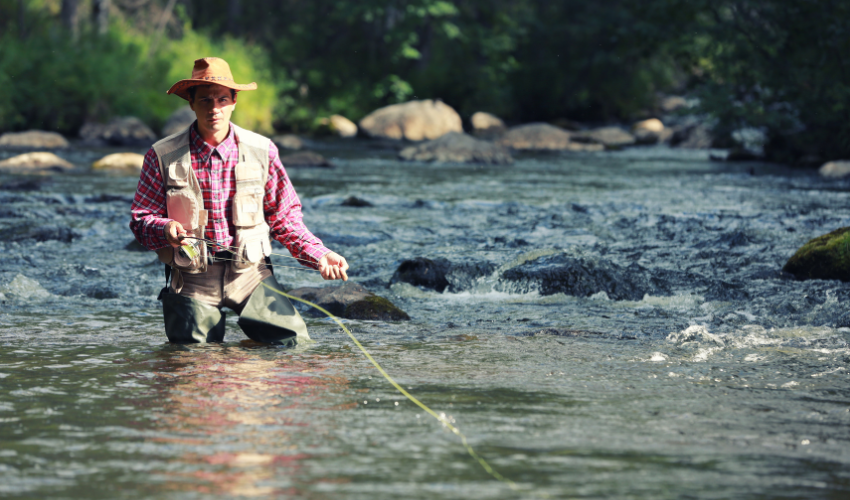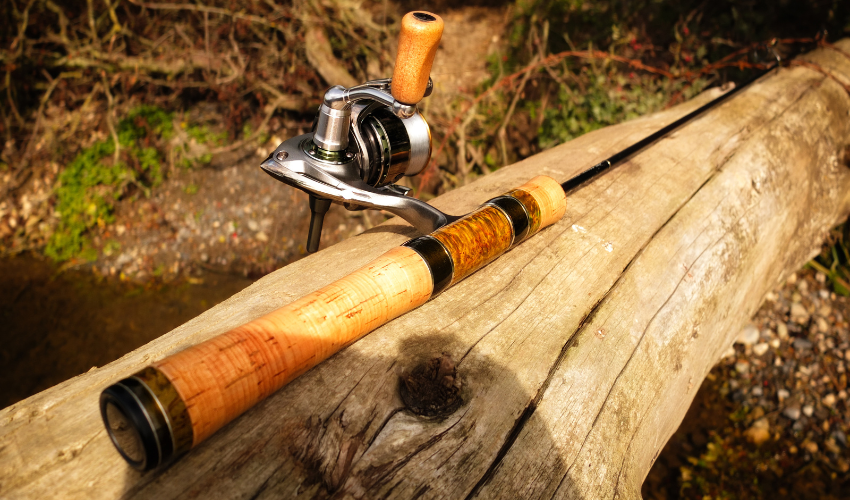Trout fish are some of the most popular freshwater game fish, prized for their delicious taste and exciting fight. They can be found in a variety of environments, from small streams to large lakes, and catching them requires a mix of skill and knowledge. In this article, we will cover everything you need to know about catching trout fish, including equipment, techniques, and tips for success.
Understanding Trout Fish:

Before you can catch trout, it’s important to understand their behavior and habitat. Here are a few key things to know:
- Trout fish are cold-water fish that thrive in temperatures between 50 and 60 degrees Fahrenheit.
- They prefer clean, clear water with plenty of oxygen and cover such as rocks, logs, and vegetation.
- Trout fish are typically active in the early morning and late afternoon, and they tend to feed on insects and other small aquatic creatures.
Choosing the Right Equipment:
To catch trout fish, you will need the right equipment. Here are the essentials:
- Fishing rod: A light or ultralight rod is best for trout fishing, as they are more sensitive to subtle bites.
- Reel: A spinning reel is the most popular choice for trout fishing, as it is easy to use and provides good control.
- Line: Use a monofilament line with a test strength of 4-6 pounds for most trout fishing situations.
- Lures: Popular trout fishing lures include spinners, spoons, and soft plastic baits. Live bait such as worms and minnows can also be effective.
- Terminal tackle: Small hooks, split shots, and swivels are necessary for rigging your lures or bait.
Techniques for Catching Trout Fish:
There are many techniques you can use to catch trout. Here are a few to try:
- Fly fishing: This traditional method involves using a lightweight fly and line to mimic the movement of insects on the water surface.
- Spin fishing: This method uses a spinning reel and lure or bait to entice trout to bite.
- Trolling: This involves pulling a lure or bait behind a boat or kayak at a slow speed.
- Drift fishing: This method involves casting upstream and letting your bait or lure drift downstream naturally.
Tips for Success:

To increase your chances of catching trout fish, here are some tips to keep in mind:
- Scout your location: Look for areas with cover, structure, and plenty of oxygenated water.
- Match your lure or bait to the conditions: Use lures or bait that mimic the food sources trout are feeding on in that particular environment.
- Be patient: Trout fishing can be a waiting game, so be prepared to spend some time on the water.
- Pay attention to the weather: Trout tend to be more active on overcast or cloudy days, so plan your fishing trips accordingly.
Common Mistakes to Avoid:
There are a few common mistakes that can decrease your chances of catching trout:
- Using the wrong equipment: Heavy gear or line can scare away trout, while lures that are too big or bright can be unappealing.
- Being too loud or visible: Trout are easily spooked, so it’s important to be quiet and avoid making sudden movements.
- Not paying attention to the conditions: Water temperature, clarity, and flow can all impact the behavior of trout fish, so it’s important to adjust your technique accordingly.
FAQs:
- What is the best time of day to catch trout fish?
Trout fish tend to be most active in the early morning and late afternoon, so these are the best times to target them.
- What is the best bait for catching trout?
Trout fish are known for feeding on insects, so lures that mimic their natural food sources such as spinners, spoons, and soft plastic baits can be effective. Live bait such as worms and minnows can also work well.
- Where is the best place to catch trout?
Trout fish can be found in a variety of environments, including small streams, rivers, and large lakes. Look for areas with clean, clear water and plenty of cover such as rocks, logs, and vegetation.
- How can I tell if I’ve caught a trout?
Trout fish are known for their distinctive markings, including speckles on their sides and a pink or orange stripe along their belly. They also have a small mouth and an elongated body.
- What should I do if I catch a trout fish?
If you catch a trout fish, handle it gently and remove the hook carefully. Consider taking a quick photo before releasing it back into the water to minimize harm to the fish.
Conclusion:
Catching trout fish can be a thrilling and rewarding experience for anglers of all skill levels. By understanding their behavior and habitat, choosing the right equipment and techniques, and following these tips and tricks, you can increase your chances of success on your next fishing trip. So, grab your gear, find a good spot, and get ready to reel in some trout!






















